Microbial Community Distribution and Core Microbiome in Successive Wound Grades of Individuals with Diabetic Foot Ulcers
- PMID: 31924616
- PMCID: PMC7054093
- DOI: 10.1128/AEM.02608-19
Microbial Community Distribution and Core Microbiome in Successive Wound Grades of Individuals with Diabetic Foot Ulcers
Abstract
Diabetic foot ulcer (DFU) is a major complication of diabetes with high morbidity and mortality rates. The pathogenesis of DFUs is governed by a complex milieu of environmental and host factors. The empirical treatment is initially based on wound severity since culturing and profiling the antibiotic sensitivity of wound-associated microbes is time-consuming. Hence, a thorough and rapid analysis of the microbial landscape is a major requirement toward devising evidence-based interventions. Toward this, 122 wound (100 diabetic and 22 nondiabetic) samples were sampled for their bacterial community structure using both culture-based and next-generation 16S rRNA-based metagenomics approach. Both the approaches showed that the Gram-negative microbes were more abundant in the wound microbiome. The core microbiome consisted of bacterial genera, including Alcaligenes, Pseudomonas, Burkholderia, and Corynebacterium in decreasing order of average relative abundance. Despite the heterogenous nature and extensive sharing of microbes, an inherent community structure was apparent, as revealed by a cluster analysis based on Euclidean distances. Facultative anaerobes (26.5%) were predominant in Wagner grade 5, while strict anaerobes were abundant in Wagner grade 1 (26%). A nonmetric dimensional scaling analysis could not clearly discriminate samples based on HbA1c levels. Sequencing approach revealed the presence of major culturable species even in samples with no bacterial growth in culture-based approach. Our study indicates that (i) the composition of core microbial community varies with wound severity, (ii) polymicrobial species distribution is individual specific, and (iii) antibiotic susceptibility varies with individuals. Our study suggests the need to evolve better-personalized care for better wound management therapies.IMPORTANCE Chronic nonhealing diabetic foot ulcers (DFUs) are a serious complication of diabetes and are further exacerbated by bacterial colonization. The microbial burden in the wound of each individual displays diverse morphological and physiological characteristics with unique patterns of host-pathogen interactions, antibiotic resistance, and virulence. Treatment involves empirical decisions until definitive results on the causative wound pathogens and their antibiotic susceptibility profiles are available. Hence, there is a need for rapid and accurate detection of these polymicrobial communities for effective wound management. Deciphering microbial communities will aid clinicians to tailor their treatment specifically to the microbes prevalent in the DFU at the time of assessment. This may reduce DFUs associated morbidity and mortality while impeding the rise of multidrug-resistant microbes.
Keywords: 16S metagenomics; antibiotic resistance; diabetic foot ulcer; wound microbiome.
Copyright © 2020 American Society for Microbiology.
Figures
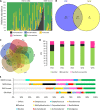
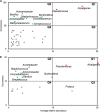
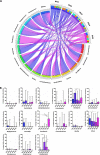
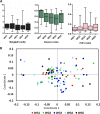

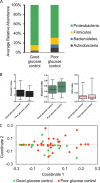

Similar articles
-
Examining diabetic heel ulcers through an ecological lens: microbial community dynamics associated with healing and infection.J Med Microbiol. 2019 Feb;68(2):230-240. doi: 10.1099/jmm.0.000907. Epub 2019 Jan 9. J Med Microbiol. 2019. PMID: 30624175 Clinical Trial.
-
Distribution of Microbes and Drug Susceptibility in Patients with Diabetic Foot Infections in Southwest China.J Diabetes Res. 2018 Aug 5;2018:9817308. doi: 10.1155/2018/9817308. eCollection 2018. J Diabetes Res. 2018. PMID: 30175153 Free PMC article.
-
One step closer to understanding the role of bacteria in diabetic foot ulcers: characterising the microbiome of ulcers.BMC Microbiol. 2016 Mar 22;16:54. doi: 10.1186/s12866-016-0665-z. BMC Microbiol. 2016. PMID: 27005417 Free PMC article.
-
The dynamic wound microbiome.BMC Med. 2020 Nov 24;18(1):358. doi: 10.1186/s12916-020-01820-6. BMC Med. 2020. PMID: 33228639 Free PMC article. Review.
-
Metagenomics to Identify Pathogens in Diabetic Foot Ulcers and the Potential Impact for Clinical Care.Curr Diab Rep. 2021 Jun 21;21(8):26. doi: 10.1007/s11892-021-01391-7. Curr Diab Rep. 2021. PMID: 34152440 Review.
Cited by
-
Escherichia coli BarA-UvrY regulates the pks island and kills Staphylococci via the genotoxin colibactin during interspecies competition.PLoS Pathog. 2022 Sep 6;18(9):e1010766. doi: 10.1371/journal.ppat.1010766. eCollection 2022 Sep. PLoS Pathog. 2022. PMID: 36067266 Free PMC article.
-
Advancements in engineered exosomes for wound repair: current research and future perspectives.Front Bioeng Biotechnol. 2023 Nov 14;11:1301362. doi: 10.3389/fbioe.2023.1301362. eCollection 2023. Front Bioeng Biotechnol. 2023. PMID: 38033824 Free PMC article. Review.
-
Global trends in research of high-throughput sequencing technology associated with chronic wounds from 2002 to 2022: A bibliometric and visualized study.Front Surg. 2023 Feb 22;10:1089203. doi: 10.3389/fsurg.2023.1089203. eCollection 2023. Front Surg. 2023. PMID: 36911623 Free PMC article.
-
Combining antibiotic-loaded bone cement-based free vastus lateralis muscle-sparing flap with split-thickness skin grafts: A reliable strategy for reconstructing diabetic foot ulcers at non-weight-bearing areas.Int Wound J. 2024 May;21(5):e14900. doi: 10.1111/iwj.14900. Int Wound J. 2024. PMID: 38705731 Free PMC article.
-
Dynamic Role of Oxygen in Wound Healing: A Microbial, Immunological, and Biochemical Perspective.Arch Razi Inst. 2022 Apr 30;77(2):513-523. doi: 10.22092/ARI.2022.357230.2003. eCollection 2022 Apr. Arch Razi Inst. 2022. PMID: 36284982 Free PMC article. Review.
References
-
- Ministry of Health and Family Welfare. 2016. The diabetic foot: prevention and management in India. Department of Health and Family Welfare, New Delhi, India: http://qi.nhsrcindia.org/sites/default/files/The%20Diabetic%20foot_0.pdf.
-
- International Diabetes Federation. 2017. IDF diabetes atlas, 8th ed International Diabetes Federation, Brussels, Belgium.
Publication types
MeSH terms
Substances
LinkOut - more resources
Full Text Sources
Medical

